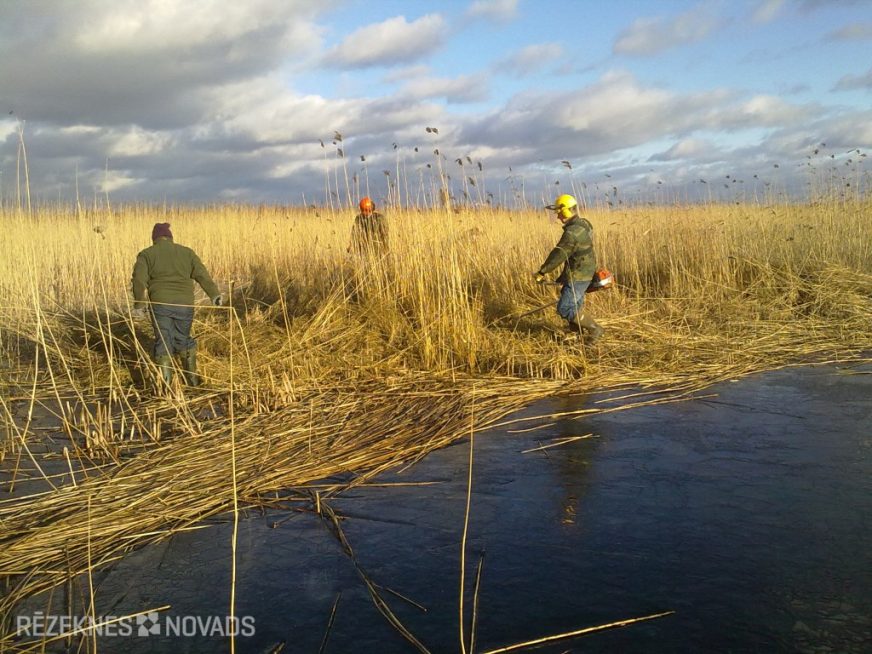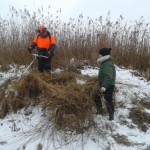Natural Value Management Measures in Specially Protected Natural Areas in Latvia

In order to promote the preservation of biodiversity, the Nature Protection Board will also take measures for the management of natural values in specially protected areas throughout Latvia this year. A rare habitat or habitat that is often the only home of a plant or animal may not always exist without human intervention. For example, meadows grow up with trees and bushes if they do not. The stream of small rivers becomes slow and water polluted if bushes and trees are planted on their beasts, whose branches and leaves, both with wind and beaver “care”, pass through the drain. At the time, the ditch of the ditch, but nowadays protected swamps cannot perform the water capture (“sponge”) function while the old ditches are draining water. Works for the preservation of biological diversity will be carried out by both the employees of the management of the regions of the natural defence administration for their own forces, if the territory of the territory belongs to the Ministry of Environmental Protection and Regional Development (MAY) in the person of the nature protection administration, and other land owners, working together with the employees of the administration, and non-governmental organisations, by organising public talks and within the framework of the activities of projects financed by the various funds.
Kurzeme Region
The Nature Protection Administration Kurzeme Regional Administration monitors 175 specially protected areas in its region. The measures for the management of protected natural values of European significance, which are planned to be carried out this year by the local government's own forces on THE land, will take place in the Grinian Nature Reserve (Saka municipality) and the Slīteres National Park (Dundaga municipality). The maintenance of open grassland in the Grinian Nature Reserve in accordance with the nature conservation plan, releasing them from bushes, is necessary to provide conditions for specially protected insects, such as the Horse-oxygen Zilenitis, the forest Sīksamtenis, the mastene and the specially protected plants for poetry, nightviolet. On the other hand, the Slīteres National Park will carry out open grassland maintenance works at the level of the Slītee Blue River and Tampere, which are the grassland of the former fishermen. There will also be no valuable overgrowth in the vicinity of Kolka pine nature trail, which is a rare day butterfly and other insect habitat. The Slīteres National Park is also expected to pay attention to the dune habitat, such as the state of grey dune, where necessary by means of management measures.
Work has already been performed with THE “Latvian State Forests” in the nature reserve “Ovites” – the release of the European Union biotopa moist intermediate dunes from bushes.
Latgale Region
Natural value-saving works will also be organised in Latgale region.
In the territory of the Razna National Park, the grassland is intended to be covered with the forest in the uncovered area of the Azzzer large bear. This area is currently covered by dense fragrance of scented scent, conventional camel grass, meadows, and a typical forest species, the usual foam and a herbal lacquer. Only plant species characteristic to the grasslands of the grassland in these herbs are present. In order to maintain open grassland and to promote the restoration of the grassland plant society, it is intended to restore the land of the former agricultural land in 1.2 ha on the large beach island.
In the area of Razna National Park, coniferous forests on oscillating terrain forms are characterised by pine forests, which are characterised by a specific and rich composition of plant species due to the calcareous soil, rare plant species such as Ruish puffle, sand esparsette etc., and ecological-related insect species. The accumulation of needles, the acidification of soil and the formation of the thick layer of moss are the main reasons for the disappearance of typical rare species. In 2015, it is planned to continue the mechanic removal of the forest submarine (scrubbing), which is an alternative forest management method for controlled combustion.
The maintenance of meadows habitats and biologically valuable grassland will be largely accomplished by the Tych Nature Reserve Fund with financial support from the Latvian Environment Protection Fund. The employees of the Latgale Regional Administration of Latgale planned to co-operate the last updated natural grassland areas where it is not possible to access the machinery. The management measures will be carried out in protected habitats of the European Union importance - “species rich pasture and pasture grassland” and “dry grassland in calcareous soils”, “grassland temperate meadows” and “pallet meadows”. The renovation of the mineralisation bands will be carried out in the territory of the Tych Nature Reserve in the territory of the Tych Nature Reserve. Similarly, the removal of bebra dams in the territory of the Krustua Nature Reserve at places where the possibility of access to the pastures to be managed will be excluded. On the other hand, the gravel quarry abandoned in the territory of the Cross Mountain Reserve is planned to carry out autumeral biotopa-care work for the preservation of the diversity of plant and invertebrate species.
In cooperation with the Tych Nature Reserve Fund, the invasive species Sosnovska Latvians will be continued to be restricted in the territory of the Teiu Nature Reserve on the banks of the Isliena River, Ozolsala, the Green Island. For the maintenance of the natural hydrological regime of the Tychelles swamp, the construction and repair works of the built dams will be carried out as necessary.
It should be noted that in the spring, the maintenance works of artificial sockets have already been performed in the Luban wetlands, the 12 artificially created islands in the Ignan ponds have been released from the bushes and fertility. The work undertaken will be continued in collaboration with local residents and landlords. On the other hand, in bird days, cages will be made in gigalos and small doomers, which will later be located in specially protected areas.
Vidzeme Region
The Gauja National Park, the Northwest biosphere reserve, four protected landscape areas, five natural parks, 83 natural reserves, two protected marine areas, 116 geological and geomorphological natural monuments, 25 protected alliances, 29 dendrological plantations and several thousand protected trees are located in the supervised area of the Vidzeme Regional Administration of Vidzeme Regional Administration.
Biotope management in the European Union's protected habitats has been performed and continues in the Gauja National Park. Ancient or natural boreal forests in 181 ha are managed in the Länchriver nature reserve area. This habitat has increased the volume of deceased wood by creating critics, high strains and other works.
In more than 60 ha, the management of the “umbrella” species is the habitat of fox prawmole (Osstenma eremitis), thus reducing the spread of open landscapes and contributing to the preservation of biodiversity. In the framework of management, the harvesting of growing bushes and trees has been carried out, a parky landscape is built in the old, large, formerly covered leaf trees. The works were performed in Ungurmuiža, Krimulda, as well as in Sigulda - Gauja ancient valley slopes, Kfield Gulf and Gūtmaņala. On the other hand, the restoration of the seamless forest hydrological regime in the swimming area of the swabs in the area of the park has been carried out at 135 ha in total area, preventing the devastating effects of the ever created melioration system on habitat.
In the Gauja National Park tribute, Strīķupe, the Nature Park “Salacas Valley” in the Northriver and the nature reserve “Rauza” in Ryan River this year will be the cleaning of river fasteners, releasing them both from bebra dams, by eliminating the trees of trees, and by creating the fasteners in separate places by inserting stones into the river.
In the nature reserve “Sedas marshes”, which is an excellent bird protection area, already this year in January 1 ha, the dam has been cleaned from tree and bush offspring as well as reeds of 1.4 ha, in order to provide the waterbirds with continuous clearing. 10 new artificial sockets for waterbirds are installed in February.
This year, Vidzeme regional administration plans to take a variety of measures for the production of beds, as well AS for THE LAND-owned lands, measures will be taken to limit the invasive species Sosnovska Latvians. In the nature reserve, “Karateri” will take measures to restore the habitat of the sands of the sands. But in nature reserve, the “rank grassland” after winter storms have already been restored to the grassland and information stalls and the algae frost from the canes. A meadow beach treatment from seasonal waste will take place in April.
Pierra Region
In the Pierre Region, the main biotope care measures are planned in the National Park of Ķemeri, where meadows are managed and pastured in approximately 376 ha. The National Park of Ķemeri, which organizes both the grassland and the maintenance of pastures, is concerned with the maintenance of meadows in the National Park. Around 200 large wild herbivores and wild horses who care for the maintenance of these meadows live in the meadows of the Lielupe River and the Dundura meadows. But not all meadows can be grazed, so some of the meadows of Ķemeri National Park are harvested and hay talks are organised for harvesting. Also this year in July, the Kemeri National Park Foundation will organize a hay talent where every lead can participate and, using the sentencing methods, put his hand in the preservation of the lost natural values.
The information was prepared by:
Nature Protection pārvaldes
Head of the Department of Public attiecību and Environmental Education
Inese rug
Mob. tel.: 26418755
